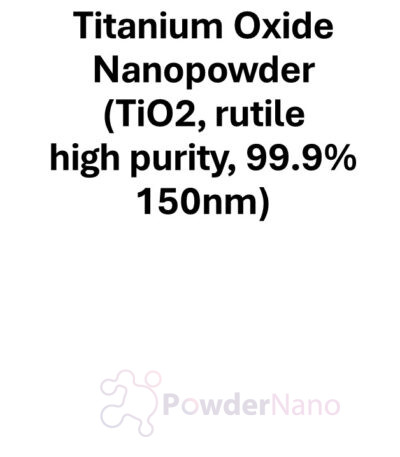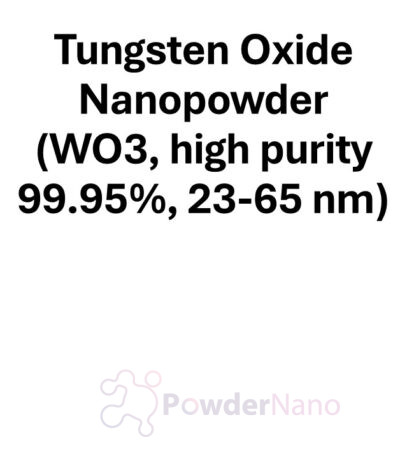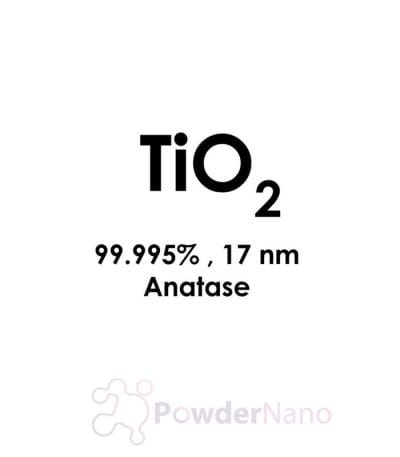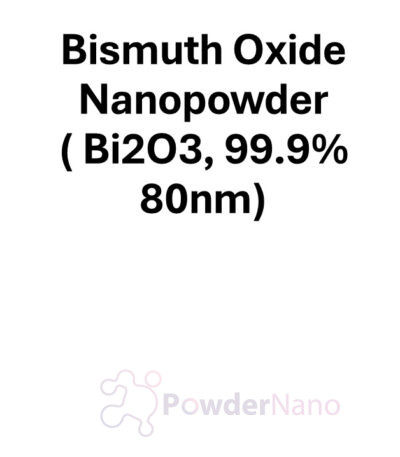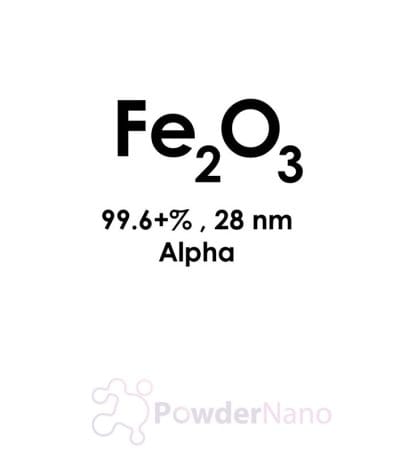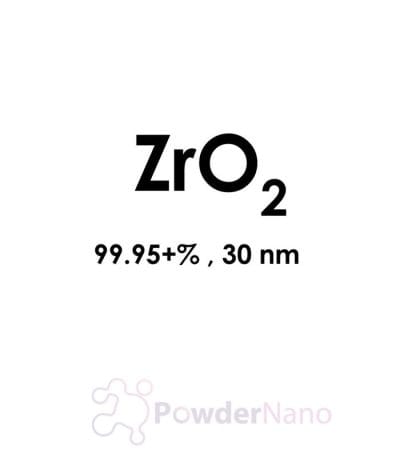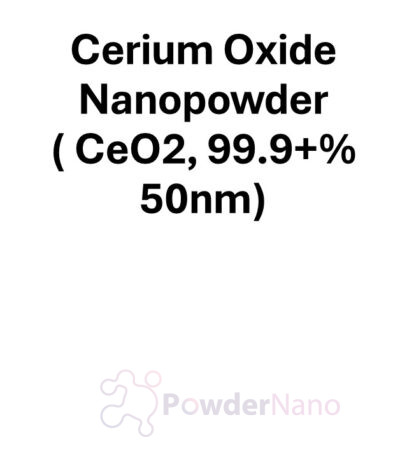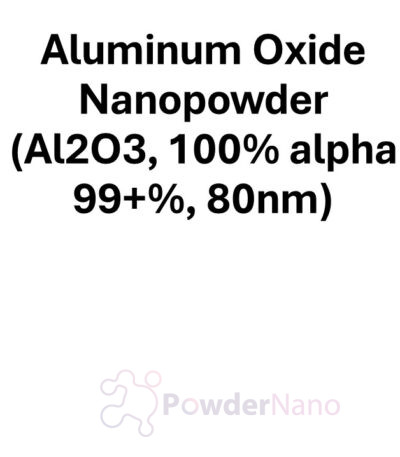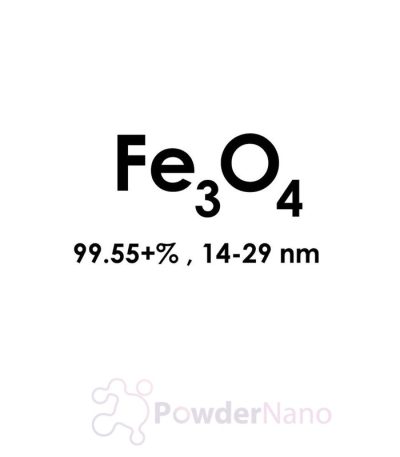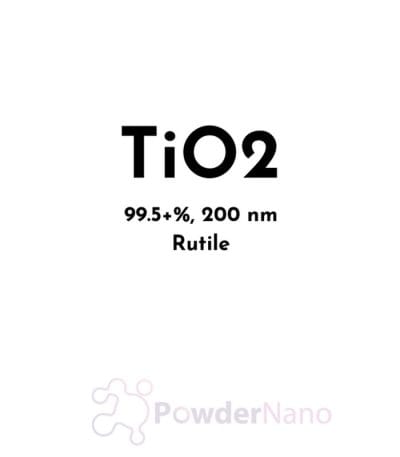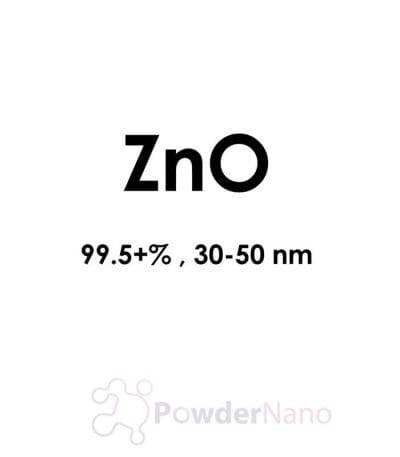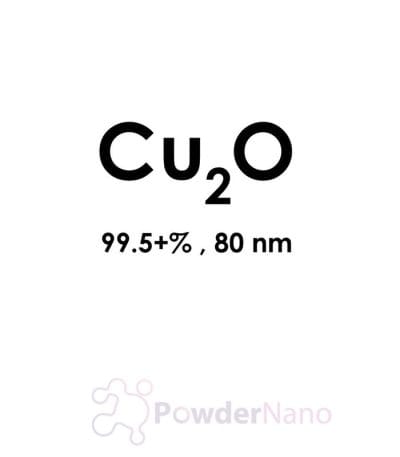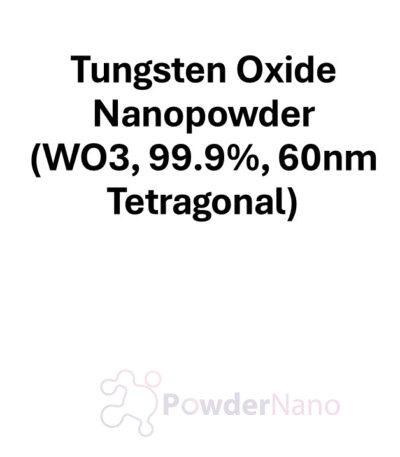Technical Specifications:
- Chemical Composition:
- Primary Ingredient: Tungsten Oxide (WO3)
- Purity: 99.9% (high purity with minimal impurities)
- Nanoparticle Size:
- Particle Size: 60 nm (nanometers)
- Particle Shape: Typically spherical or irregular, depending on the synthesis method.
- Crystal Structure:
- Structure: Tetragonal (WO3 typically crystallizes in a tetragonal form at the nanoparticle scale, which contributes to its excellent optical and electrochemical properties).
- Surface Area:
- Due to its nanostructured form, WO3 nanoparticles have a relatively high surface area, which enhances their reactivity and suitability for applications like catalysis, energy storage, and electrochromic devices.
- Density:
- The nanopowder has a lower apparent density compared to bulk tungsten oxide due to the nanoscale size and the associated porosity.
- Other Characteristics:
- Color: Tungsten oxide nanoparticles are typically yellow or greenish-yellow depending on their size, shape, and the method of synthesis.
- Reactivity: WO3 nanoparticles exhibit high reactivity due to their large surface area, making them ideal for applications requiring catalytic, electrochemical, and optical properties.
Applications:
- Electrochromic Devices:
- Purpose: WO3 is a key material in electrochromic devices, which change color in response to an electrical charge.
- Application: WO3 nanoparticles are widely used in smart windows, mirrors, and displays where they can change color or opacity under an applied voltage. This makes them ideal for energy-efficient windows and for applications in automotive and architectural glass.
- Catalysis:
- Purpose: WO3 exhibits catalytic properties, particularly in oxidation reactions.
- Application: WO3 nanoparticles are used in various catalytic processes, such as oxidation of organic compounds and in environmental pollution control. These applications are beneficial in reducing harmful emissions from industrial processes.
- Energy Storage:
- Purpose: Tungsten oxide has potential applications in energy storage devices due to its electrochemical properties.
- Application: WO3 is used in lithium-ion batteries and supercapacitors, where it helps improve the charge/discharge efficiency, capacity, and cycle stability. The material’s high surface area enhances its performance as an electrode material.
- Hydrogen Production (Water Splitting):
- Purpose: WO3 is studied for its ability to facilitate photocatalytic water splitting to produce hydrogen.
- Application: WO3 nanoparticles are employed in photocatalytic water splitting systems under UV light to generate hydrogen fuel. This process is promising for sustainable hydrogen production, contributing to renewable energy technologies.
- Gas Sensing:
- Purpose: WO3 nanoparticles are highly sensitive to gases, making them suitable for use in gas sensors.
- Application: WO3 is used in the detection of gases like nitrogen dioxide (NO2), carbon monoxide (CO), and other hazardous or environmentally relevant gases. These sensors are used in environmental monitoring and industrial safety systems.
- Solar Cells:
- Purpose: WO3 has properties that make it useful in solar energy conversion devices.
- Application: WO3 nanoparticles are incorporated into solar cells to enhance their efficiency. It can be used in dye-sensitized solar cells (DSSCs) and other solar technologies due to its excellent photocatalytic properties.
- Environmental Remediation:
- Purpose: WO3 is effective in removing harmful pollutants from water and air.
- Application: WO3 nanoparticles are utilized in environmental cleanup processes for the degradation of organic pollutants in wastewater treatment, air purification, and soil remediation. Their photocatalytic properties make them suitable for breaking down contaminants in industrial effluents and other pollutants.
- Electrochemical Capacitors (Supercapacitors):
- Purpose: WO3 can be used in electrochemical capacitors for energy storage applications due to its high surface area and electrochemical properties.
- Application: WO3 nanoparticles are used as an electrode material in supercapacitors to improve energy density and enhance performance. They are particularly useful in energy storage systems that require high power density and long cycle life.
- Optical and Photonic Devices:
- Purpose: WO3 has excellent optical properties, especially when used in thin-film coatings.
- Application: WO3 nanoparticles are employed in optical coatings, photodetectors, and photonic devices. They are used in applications where changes in optical properties under external stimuli (like voltage or light) are required.
- Sensing and Detection of Heavy Metals:
- Purpose: WO3 has been explored for use in detecting heavy metals in the environment.
- Application: WO3 nanoparticles are used in sensors that detect trace amounts of heavy metals like lead, mercury, and cadmium. These sensors can be applied in environmental monitoring and industrial processes to ensure the safety of water and soil.
Key Benefits:
- Electrochromic Properties: WO3’s ability to change color or opacity in response to an electric field makes it invaluable in smart windows and energy-efficient architectural applications.
- High Reactivity: The high surface area of WO3 nanoparticles enhances their catalytic and photocatalytic properties, making them effective in applications like environmental cleanup, hydrogen production, and energy storage.
- Versatile Applications: WO3 nanoparticles are used across a wide range of industries, including energy, environmental protection, electronics, and sensing, making them a versatile material in modern technologies.
- Environmental Friendliness: WO3’s applications in environmental remediation, such as photocatalysis for pollutant degradation and gas sensing, contribute to more sustainable and eco-friendly solutions.
- Stable and Durable: Tungsten oxide is known for its chemical stability and durability, making it ideal for applications requiring long-term performance under harsh conditions.
